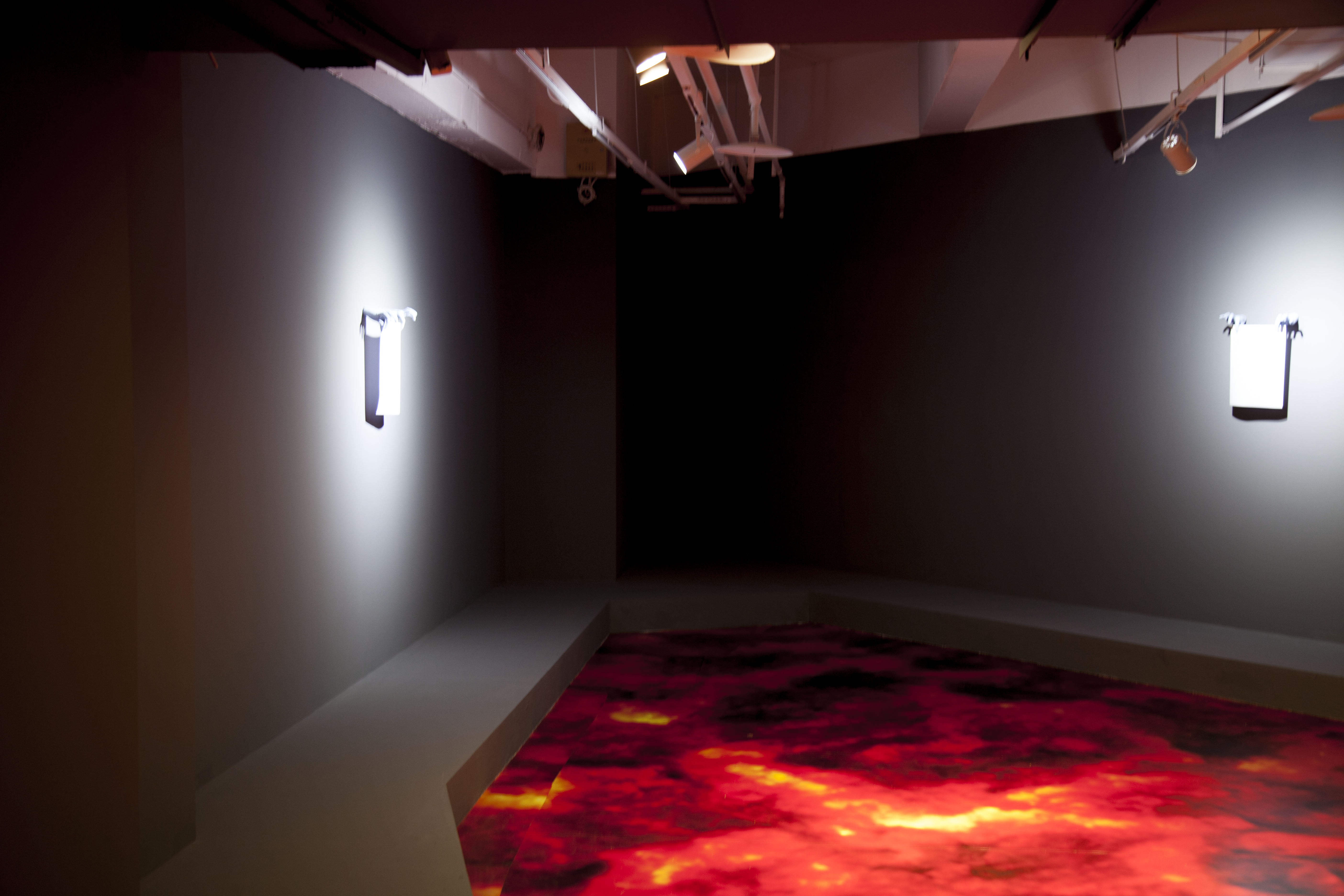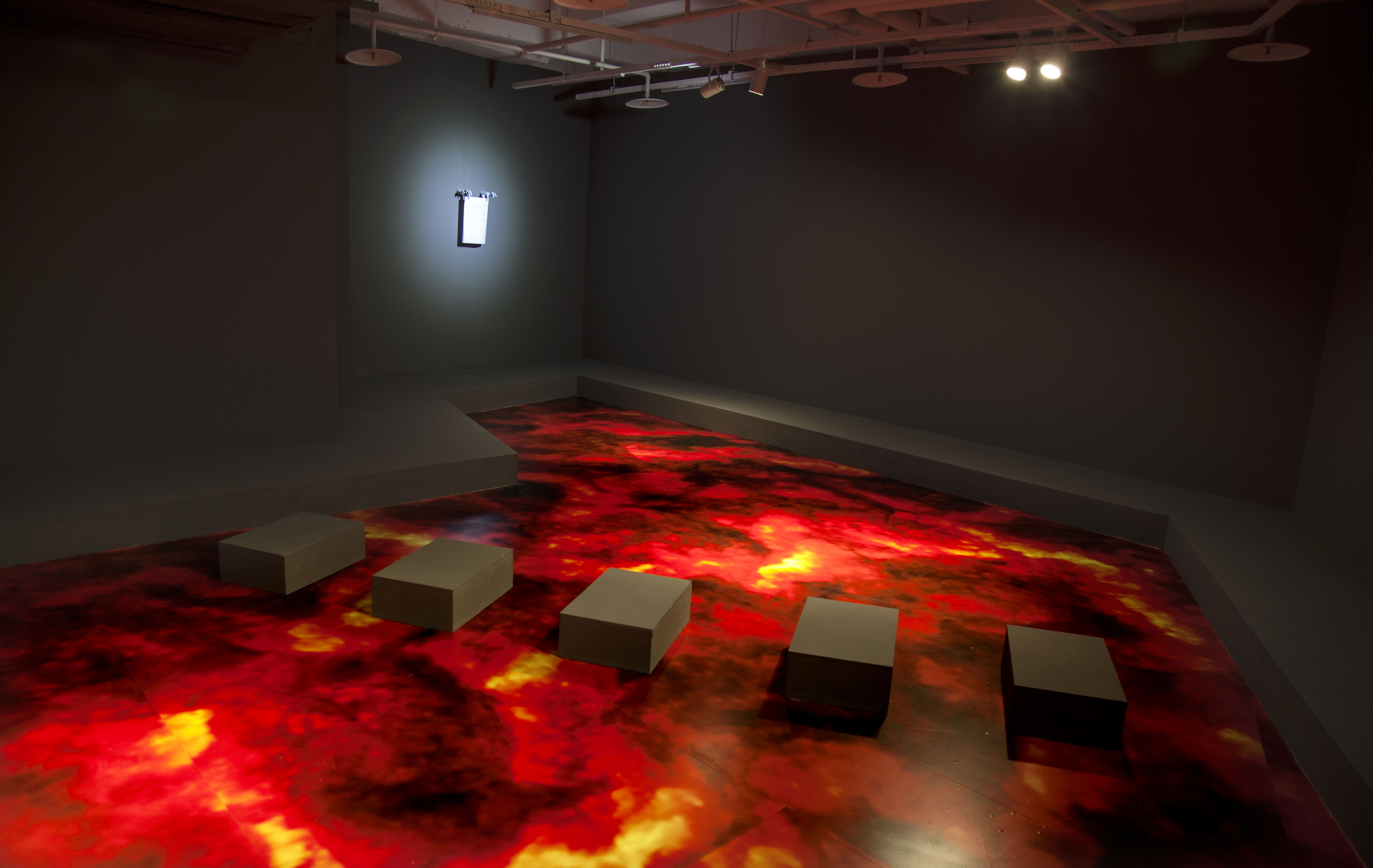讲故事做为人类为保存记忆而留存的一种基本形式算得上一门老手艺,大概源自于人们聚集一起打发无聊驱散恐惧的临时行为。从起初庄严凝重的仪式再到近时的闲散评书。当大雪封山天近黄昏人们于是围炉夜话,从文明起源到妖魔鬼怪,从乱世英雄再到盛世佳人,古有志怪小说阅微堂草记,笑谈人间聊斋,写尽人间词话。今有段子心灵鸡汤口袋书,慰藉安抚都市白领,励志逆袭低端失足青年。从茶馆街角到厅堂场馆生活空间的讲述只是从没人像陆平原这般将其搬到美术馆与画廊,扩宽艺术作品在现实世界中的存在状态。
写作在传统是经天纬地的不朽盛事。是为人寻求真理而获得的话语特权,是思想的直接呈现,是思想的对等物。文在罗兰巴特的论述里面视为织物来强调生成的观念,在编织中文被制就加工。主体隐没在织物,自我消融,将自身想象成独特之物,这些故事不是单一体的幻象,而是一个社会剧场,独特的而非个人的。在这里文是作品的可感和外观。是字词织入作品的编织物。陆平原强调自己的艺术工作是“创作一些事情”,在这些故事之间没有必然的逻辑顺序与联系,这些都来自于他本人的个人经历,我们很难从中找出一条路径去寻遁。剔除了对应的背景现实,情感绵密天马行空和平铺直叙的言说绕开概念和隐喻。这也不是语言技巧实验的新小说。字词的排布,在可说与不可说的界限与想象力之间的进行感性创造。只有写作从沉重的历史记忆中走出来,而变成自由滑行在记忆之间的妥协物。变成一种自由的机遇。写作将生命变成一种命运,记忆换成一种功能。故事才能成为一种有时间延伸的生命政治。文不再是诗意的栖息,主体不在场的中性,意义不再承诺,这时候想象力才能获得摆脱现实原则的高度自由。艺术作品从而有了一种生活与现实与现存社会相对立的具有否定和超越性的维度。
Story-telling, as a basic form for keeping memories, probably originates from ancient and temporary community activities of people gathering together to kill time and exorcise fear. In the past, when heavy snow cut off the roads to the mountains, or nightfall came, people would sit around in groups and share stories with each other. Forms of story-telling range from solemn rituals to casual folks and tales as well as anecdotes with various subjects and topics that include cultural developments of human beings, ghost tales, heroic legends, myths of beauties and so forth. In ancient times, there were mythical stories like yueweitang caoji that tells folktales and anecdotes. Nowadays self-development contents and media broadcast that comfort the youngster’s emotions and encourage those who are frustrated with their current living conditions. Plenty of stories are told at different locations in all kinds of circumstances. However, no one except artist Lu Pingyuan, moves the activity of story-telling into museums and gallery spaces and broaden the existence of art works in reality.
Writing, in its traditional sense, is an activity with eternity and monumental significance. It endows human beings with an privilege of speech and empowers us with a great capacity to explore truth. The results of writing represents ideas and equal to human thinking. In Roland Barthes theory, “text” is described as an object constructed to formulate the concept of generation. The subject is concealed in those words that shape the “text” and turns into something special. Stories do not follow a singular type of imagination. Instead, they are a theater that imitates the society, special and universal. In this sense, “text” constitutes the appearance of the art work and makes it perceptible. Lu Pingyuan emphasizes the idea of “creating something” in his work, and stories in his art do not follow standard order or logic. They are greatly influenced by his personal life, thus a global path to understand his works hardly exists. His art removes the correspondent social background with romantic and direct narratives and goes around concepts and metaphors. Lu’s works are not experimental outcomes of word playing. He works in-between the gap within the speakable and unspeakable and creates art with imagination. Writing is the only thing that survives in the waves of history, and becomes the consequence of compromise that slips in memories, as well as free opportunity. Moreover, writing turns life into a kind of fate, and transform memory into a special function. Only in this way, can stories exist as an form of life that extends time. Only when the text is not the habitat of poetry, the subject gains a new neutral standpoint that do does present and when meaning does not promise anything, can imagination embrace a great freedom that go far beyond the reality. As a result, the art work can gain a dimension with negation and transcendence that goes against the reality and the social situation.
Stories that feature treasure are usually twisted and mysterious. Wheather the ending is pleasant or not is rather unpredictable. Lu Pingyuan changes the gallery into a space with karst landform. This is not like playing the game Takagism. However, while go through the winding and zigzagging path, the audience can read the stories created by the artist and do treasure hunt in the texts. This would be an interesting and refreshing journey, as treasure hunt in real life is very much desired but difficult to achieve. Stories are tales, legends, anecdotes, facts and truths. They are both fortunes like golden mountains and a pile of hard rocks. Exploration can only shine when go around in the space, stay and gaze.
展览作品



展览概况
出品人/Produced by
黄中华 Huang Zhonghua
艺术总监/Art Director
杨 述 Yang Shu
策展人/Curator
倪 昆 Ni Kun
展览协调/Coordinators
张小吧 Zhang Xiaoba
乙 丹 Yi Dan
艺术家/Artists
陆平原/Lu Pingyuan
开幕时间/Opening 2017年9月9日, 16:00 / 16:00, Sep. 19th, 2017 地点/Venue 重庆两江新区黄山大道中段6号星汇两江艺术商业中心3区 重庆星汇当代美术馆1-2楼 F1-F2, The Galaxy Museum of Contemporary Art, Bloc 3, Xinghui Liangjiang Art Business Center, Liangjiang New District, Chongqing 展期/Duration 2017年9月9日至2017年11月9日 2017 Sep. 9th, 2017 to Nov. 9th, 2017 对外开放时间: 每周二至周天:10:00-18: 00(周一闭馆) 票务信息:免费 opening time:Tue-Mon 10:00-18:00 Ticket information: Free Tel: +86 23 63111269 E-mail: gcacenter@126.com 地址:重庆两江新区星汇两江艺术商业中心3区1-2楼 F1-2 Block 3, Xing Hui Liang Jiang Art Business Center, Liangjiang New Zone District, Chongqing, China 400021